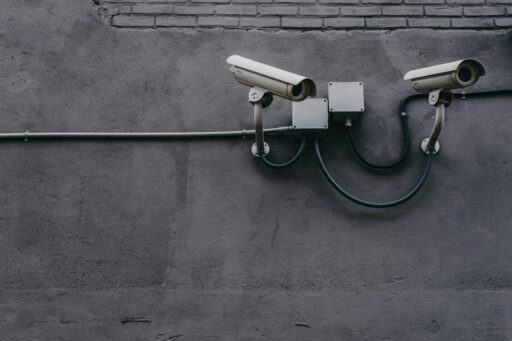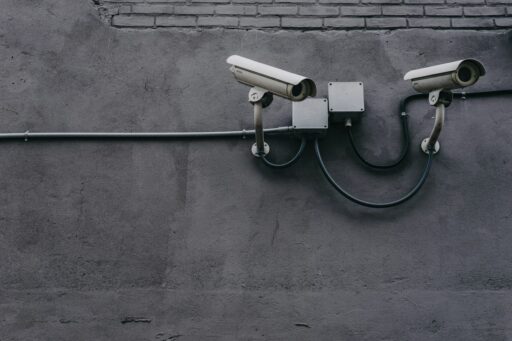Embarking on the journey to build a high-performance crypto mining rig can be both exciting and complex. This DIY guide aims to demystify the process, providing a step-by-step approach to constructing a mining rig that not only secures the blockchain but also has the potential to turn a profit. From setting clear objectives and budgeting to selecting hardware and optimizing your setup, this guide covers the essential aspects of building a powerful and efficient mining system. Whether you’re a seasoned computer enthusiast or new to the world of cryptocurrency, these insights will help you navigate the technicalities and strategic decisions involved in establishing a successful mining operation.
Key Takeaways
- Begin by defining your mining goals and budget to conduct a cost analysis and determine profitability thresholds, ensuring financial viability.
- Select the right hardware components, considering customization options for enhanced performance, and follow a step-by-step guide for assembly.
- Optimize your mining rig by fine-tuning hardware settings, implementing cooling solutions, and focusing on energy-efficient operation to reduce costs.
- Connect to the crypto network by choosing a reputable mining pool, configuring your mining software, and setting up monitoring for your operations.
- Stay informed and adaptable in the evolving world of cryptocurrency to maintain a profitable and secure mining rig over time.
Setting Your Mining Objectives and Budget

Conducting a Preliminary Cost Analysis
Before diving into the world of crypto mining, it’s crucial to conduct a thorough preliminary cost analysis. This will help you understand the financial landscape and set realistic expectations for your mining venture. Begin by defining your goals and budget expectations to ensure alignment with the potential rewards of mining. Consider the initial hardware investment, ongoing energy costs, and the expected market price of the cryptocurrency you aim to mine.
- Define goals and budget expectations
- Estimate potential crypto rewards vs. running costs
- Choose the right hardware based on cost-efficiency
A clear understanding of the costs involved in setting up and running a mining rig is essential for determining its profitability and long-term sustainability.
When estimating profitability, factor in the likelihood of winning block rewards and the average cost of maintaining and running the rig. If the projected returns are less than the costs, the mining operation may not be viable. Remember, the crypto market is volatile, and prices can fluctuate significantly, impacting your bottom line.
Determining Profitability Thresholds
To ensure the viability of your crypto mining rig, it’s crucial to determine the profitability thresholds. This involves a careful analysis of potential earnings against the costs associated with setting up and running your mining operation. Use online calculators to estimate profitability, considering factors such as hash rate, power consumption, and the specific cryptocurrencies you aim to mine.
The following table outlines key metrics to consider when assessing cloud mining profitability:
| Metric | Description |
|---|---|
| Profitability | Potential earnings versus costs |
| Hashrate | Mining power you’re renting |
| Contract Duration | Length of the mining agreement |
| Fees | Setup, maintenance, and operational costs |
| Platform Reliability | Company’s track record and customer feedback |
| Withdrawal Terms | Conditions for withdrawing earnings |
| Security Measures | Protection against hacking and fraud |
Remember, the competitive nature of mining means profitability is not guaranteed. Continuous monitoring of expenses and market conditions is essential.
Before committing to a mining pool, consider its stability. A stable mining pool can significantly influence the consistency of your returns.
Understanding the Financial Commitment
Building a high-performance crypto mining rig requires a significant financial commitment, not only for the initial setup but also for ongoing expenses. It’s crucial to account for both capital and operational costs to ensure long-term sustainability.
Before diving into the world of crypto mining, consider the following financial aspects:
- Initial investment for purchasing hardware components.
- Regular maintenance and potential hardware upgrades.
- Electricity costs, which can vary greatly depending on your location.
- Internet connectivity expenses.
- Cooling solutions to maintain optimal hardware performance.
Remember, the goal is to create a mining rig that not only performs well but also remains cost-effective over time. Balancing upfront costs with potential earnings is key to a successful mining operation.
Lastly, be aware of the contractual limitations and regulatory compliance issues that may affect your mining activities. These factors can influence the overall profitability and legality of your mining rig.
Selecting and Assembling Your Mining Hardware

Essential Components for a Mining Rig
Building a high-performance crypto mining rig requires a clear understanding of the essential components that form the backbone of your setup. These components are the pillars that will support your mining objectives, ensuring that your rig runs efficiently and effectively.
- Mining Hardware: At the heart of the rig is the mining hardware, which can be a high-end GPU or an ASIC miner, tailored for specific cryptocurrencies.
- Mining Software: This software is the conduit between your mining hardware and the blockchain network, managing the mining process.
- Power Supply Unit (PSU): A robust PSU is critical, with a recommendation of at least a 1200W rating to handle the energy demands.
- Storage: A solid-state drive (SSD) will ensure fast and reliable data access.
- PCI-e Risers: These are used to connect multiple graphics cards to the motherboard, expanding your rig’s mining capacity.
- Cooling System: Adequate cooling is essential to prevent overheating and ensure long-term operation.
- Internet Connection: A stable and fast internet connection is crucial for maintaining a connection to the crypto network.
It’s important to not only focus on the initial setup but also consider the ongoing costs, profitability, and potential risks associated with crypto mining. This holistic approach will guide you in building a mining rig that meets your financial and performance goals.
Customization Options for Enhanced Performance
When building a high-performance crypto mining rig, customization is key to achieving optimal results. Selecting the right GPUs or ASICs is crucial, as these components are the heart of your mining power. While there’s room for customization when designing a DIY mining rig, most of these units include a few essential hardware features.
Beyond the basic setup, miners can explore advanced options to boost their rig’s performance:
- Overclocking the GPU to increase hash rates
- Adjusting power limits to find the perfect balance between performance and energy consumption
- Updating firmware for better hardware compatibility and efficiency
- Implementing custom cooling solutions to maintain optimal temperatures
Optimization involves adjusting settings such as the hash rate, power consumption, and cooling parameters. The goal is to find a balance that maximizes profitability by increasing efficiency and extending the lifespan of the miner.
Regular maintenance and upgrades are also part of the customization process. Keeping your mining rig up-to-date with the latest software and hardware improvements can lead to significant gains in mining efficiency. Experimentation and ongoing adjustments may be necessary as mining conditions and cryptocurrency values change.
Step-by-Step Assembly Guide
Once you have all the necessary components for your mining rig, it’s time to start the assembly process. Ensure you have a clean, static-free workspace to avoid any damage to sensitive electronics. Begin by mounting the ASIC chips onto the PCB with precision, as this is crucial for the functionality of your miner.
Next, connect the power supply unit to the PCB, making sure to match the power requirements of your ASIC chips. This step is vital for the safe and efficient operation of your mining rig.
The control unit is the brain of your mining operation. Connect it to the ASIC miner to manage its operation and facilitate communication with the mining network.
For the final assembly, place all components into a housing that supports good airflow. This will help in cooling and protecting the components from environmental factors. Remember to consider the PCB design and manufacturing considerations, as they are essential for the high power and thermal management requirements of your miner.
Here’s a quick checklist to guide you through the assembly process:
- Preparation of workspace and tools
- Mounting of ASIC chips
- Power supply connection
- Control unit setup
- Final assembly and housing
After assembly, it’s important to test your mining rig thoroughly to ensure everything is functioning correctly before connecting to the mining network.
Optimizing Your Mining Rig for Maximum Efficiency

Fine-Tuning Hardware Settings
To achieve the best performance from your crypto mining rig, fine-tuning hardware settings is crucial. This process involves calibrating the hash rate, power consumption, and cooling parameters to optimize efficiency and longevity. Here’s a simple guide to get you started:
- Hash Rate Adjustment: Begin by setting a baseline hash rate, then incrementally increase it while monitoring stability and temperature.
- Power Tuning: Adjust the power settings to find a balance between energy consumption and hash rate. Lower power consumption can lead to a more cost-effective operation.
- Cooling Calibration: Ensure your cooling system is adequate for your rig’s heat output. Adjust fan speeds and consider adding additional cooling solutions if necessary.
Remember, the goal is to maximize profitability without compromising the hardware. Regular experimentation and adjustments are essential as mining conditions and cryptocurrency values fluctuate.
Stress testing your rig under full load conditions is an important step to ensure stability. Monitor the rig’s temperature and power consumption closely during this phase. If issues arise, troubleshoot by checking connections, component functionality, and software configurations. Upkeep is just as important as initial setup, so incorporate regular maintenance into your routine to sustain peak performance.
Cooling Solutions to Prevent Overheating
Maintaining optimal operating temperatures is crucial for the longevity and efficiency of your crypto mining rig. An effective cooling system is essential to prevent hardware damage and ensure consistent performance. Here are some key considerations for cooling solutions:
-
Heat Sinks and Fans: Install heat sinks to dissipate heat from critical components. Pair these with high-quality fans that provide adequate airflow and prevent dust accumulation, which can lead to short-circuiting.
-
Liquid Cooling: For more advanced setups, liquid cooling systems can offer superior cooling capabilities, especially for rigs with high power consumption.
-
Maintenance: Regular maintenance, including cleaning and replacing parts of the cooling system, is necessary to sustain high performance and prolong the life of your mining rig.
Monitoring the miner’s performance and environmental conditions is vital to detect any issues early and prevent overheating.
Remember, a well-maintained cooling system not only protects your investment but also maximizes the uptime of your mining operations.
Energy Consumption and Cost-Effective Operation
When building a high-performance crypto mining rig, energy consumption is a critical factor that directly impacts profitability. To ensure cost-effective operation, miners must select hardware with optimal power efficiency. For instance, a device with a power efficiency of 0.042 j/Gh can yield a daily profit of $2.77 at a power cost of $0.01 per kilowatt, which translates to over $1,000 annually.
Efficiency Unleashed: Power Strategies for Optimal Crypto Mining. By optimizing your mining rig’s energy consumption, you can significantly reduce operational costs and improve your return on investment.
Understanding the relationship between hash rate, power consumption, and environmental conditions is essential. A mining rig operating at 29.7 J/TH might generate $12 daily, but this is contingent upon an electricity cost of $0.1/kilowatt. Here’s a quick reference for some of the power efficiencies and expected profits of popular mining hardware:
| Power Efficiency (j/Gh) | Daily Profit | Annual Profit | Power Cost ($/kW) |
|---|---|---|---|
| 0.042 | $2.77 | $1,011.05 | 0.01 |
| 0.054 | $10.04 | – | – |
| 0.164 | -$0.44 | – | – |
| 29.7 | $12 | – | 0.1 |
Remember, the lower the joules per gigahash, the higher the efficiency of the mining device. Always consider the payback period and the annual return percentage when evaluating the cost-effectiveness of a mining rig.
Connecting to the Crypto Network and Starting Mining

Choosing the Right Mining Pool
After selecting a reputable mining pool, it’s crucial to link your crypto wallet to the pool’s official address. This ensures that you receive your mining rewards directly and securely. Here’s a simple checklist to follow:
- Research mining pools to find one that matches your needs in terms of fee structure, payout scheme, and server location.
- Set up your mining hardware and install the necessary mining software.
- Create an account on the pool’s website and complete any verification required.
- Configure your mining software with the pool’s address and create a worker ID for each of your rigs.
- Start mining and regularly monitor your rig’s performance, making adjustments to optimize profitability.
Remember, consistent monitoring and management of your mining operations are key to maximizing your mining rig’s efficiency and profitability over time.
Configuring Mining Software and Settings
Once you have selected your mining software, such as CGMiner, NiceHash, or MultiMiner, it’s time to configure it for optimal performance. Ensure that the software is compatible with your hardware and operating system before proceeding with the setup. Configuration involves specifying the mining pool details, setting up worker IDs for your rigs, and fine-tuning performance parameters like hash rate and power consumption.
Configuration is a critical step that can significantly impact your mining rig’s efficiency and profitability. Take the time to understand each setting and adjust them according to your mining objectives.
Here are the basic steps to configure your mining software:
- Install the firmware on your control unit to manage the ASIC chips and handle the mining algorithm.
- Create an account on your chosen mining pool’s website and complete any necessary verification.
- Enter the pool’s address into your mining software and establish a worker ID for each rig.
- Adjust settings for hash rate, power consumption, and cooling to find a balance that maximizes profitability.
- Start your mining software to begin mining and commit to regular monitoring and adjustments.
Monitoring and Managing Your Mining Operations
Once your mining rig is up and running, monitoring and managing its operations becomes crucial to ensure optimal performance and longevity. Regular maintenance, such as cleaning dust from components and updating firmware, is essential. It’s also important to monitor the rig’s environmental conditions to prevent overheating.
To maintain a high-performance mining rig, consider the following:
- Regular Maintenance: Keep your mining rig clean and replace any worn-out parts, especially in the cooling system.
- Performance Monitoring: Use mining software that provides detailed diagnostic information.
- Stress Testing: Run your rig under full load to test stability and performance.
- Troubleshooting: If issues arise, methodically check and adjust your setup.
Optimization is an ongoing process. As mining conditions and cryptocurrency values fluctuate, you’ll need to adjust settings like hash rate and power consumption to maintain efficiency.
For those looking for a more hands-off approach, host mining allows you to own the hardware while outsourcing the operational management to a specialized facility. This way, you can monitor your rig remotely and benefit from professional maintenance.
Conclusion
In summary, building a high-performance crypto mining rig is a multifaceted endeavor that requires careful planning, a clear understanding of your goals and budget, and a willingness to engage with the technical aspects of cryptocurrency mining. By following the steps outlined in this guide, from selecting the right hardware to joining a mining pool, you can construct a mining rig that not only enhances the security of the blockchain but also has the potential to be profitable. Remember, the landscape of cryptocurrency is constantly changing, so staying informed and adaptable is crucial. Whether you’re a seasoned miner or a newcomer to the scene, the journey of building and optimizing your own mining rig can be both educational and financially rewarding.
Frequently Asked Questions
What are the essential components needed for a DIY crypto mining rig?
A DIY crypto mining rig typically requires a motherboard, CPU, RAM, power supply unit, graphics cards (GPUs) or ASIC miners, cooling system, and a reliable internet connection. The exact components may vary based on the cryptocurrency you plan to mine and your budget.
How can I determine if building a mining rig will be profitable?
To determine profitability, conduct a cost analysis considering hardware expenses, energy consumption, and potential mining rewards. Use online calculators to estimate earnings based on the hash rate of your rig and the current difficulty level of the cryptocurrency you wish to mine.
What is the importance of joining a mining pool for my mining rig?
Joining a mining pool increases your chances of earning mining rewards by pooling computational resources with other miners. Solo mining has become less viable due to high competition; pools offer more consistent payouts, albeit smaller, as rewards are shared among pool members.
How can I optimize my mining rig for maximum efficiency?
Optimize your mining rig by fine-tuning hardware settings such as clock speeds and voltages for optimal performance. Implement effective cooling solutions to prevent overheating and choose energy-efficient components to minimize electricity costs.
What should I consider when selecting a mining pool?
When choosing a mining pool, consider factors such as the pool’s fee structure, payout frequency, minimum payout threshold, server location, security measures, and the pool’s reputation within the crypto community.
Is it necessary to have a background in computer science or engineering to build a mining rig?
While a background in computer science or engineering can be helpful, it is not necessary. Many resources and guides are available to assist individuals with varying levels of technical expertise in building and operating a mining rig.





